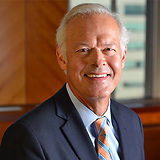On June 27, 2018 the Supreme Court issued its most important labor law decision in the past 40 years. In those four decades, a case named Abood was the leading precedent that allowed public sector unions to charge a so-called “agency fee” to nonmembers of the union for collective bargaining activities of the union. No more.
In its 5-4 decision in Janus vs. AFSCME written by Justice Alito, the Court ruled that States and public-sector unions may no longer exact agency fees from nonconsenting members. Reason: That violates the free speech rights of nonmembers by compelling them to subsidize private speech on matters of public concern.
Practical Impacts of the Janus Decision
Unconstitutional Clauses. Many state and local public sector labor contracts across the U.S. have dues provisions that are now unconstitutional. A public sector collective bargaining agreement that has a provision that compels a nonmember to pay an agency fee without his or her consent is no longer enforceable. New, legally-compliant dues provisions will need to be negotiated by the parties.
Right-to-Work States. Twenty-eight states have so-called right-to-work (aka RTW ) laws. These laws generally prohibit compelled agency fee clauses in collective bargaining agreements. Ohio does not have a comprehensive RTW law (except in the railroad industry). Kentucky, Indiana and West Virginia have RTW laws. The Janus decision joins a national trend against the idea of compelling nonmembers of a union to pay agency dues to the union as a condition of employment.
“Compelled Subsidy”. The Court noted that when a union and public employer negotiate a collective bargaining agreement, matters of public concern are involved. The First Amendment, the Court ruled, protects the nonmember employee from being compelled to “subsidize” (Court’s word) those viewpoints that he or she disagrees with.
“Consent”. An important qualifier the Court in Janus uses is “consent”. If an employee “clearly and affirmatively consents” before money is deducted for agency dues, the Court says that can be a legal waiver of free speech objections by the employee. So, expect to see unions proposing a consent process for nonmembers to waive free speech objections so that the agency fee cash flow can continue. Public employers will need to understand Janus and decide how they want to deal with such consent proposals.
Impact on Unionization in Public Education. In recent years there has been a declining percentage of teachers represented by unions in public and private U.S. schools, now dipping below 50%. The Janus case now makes it harder to collect public sector union dues and adds steam to teachers who don’t want to pay dues to support public causes they disagree with. These employees have been called “free riders” by unions in the Janus arguments because such employees have been seen as getting the wages and benefits of the labor contract without paying their “fair share”. But the Supreme Court has rejected the free rider label, saying that the free speech rights outweigh the free rider concern.
A Few Crystal Ball Footnotes:
- While Janus involves public sector labor contracts, the Court’s decision, along with RTW legislation and an overall decline in unionization is a part of a larger sea change in the American workplace...both private and public. Clearly, Janus will have a major impact on the dues-based economics of union business operations.
- The dissents in Janus are heated, and point to larger divisions, with Justice Kagan accusing the majority Justices of picking “the winning side in what should be—and until now has been—an energetic policy debate”. If we look through the crystal ball, the Janus case involves not only union dues, but much larger tensions about the Court’s constitutional role: i.e. if, when and how nine unelected judges should intervene (on behalf of the First Amendment or otherwise) in the ‘energetic policy debates’ of the people. Stay tuned. That larger issue will be shaped by the Court’s membership, with two of the Justices (Breyer, Ginsberg) now over 80 (the average Justice retirement age in recent decades being around 78) and a vacant seat due to Justice Kennedy’s resignation effective July 31.

